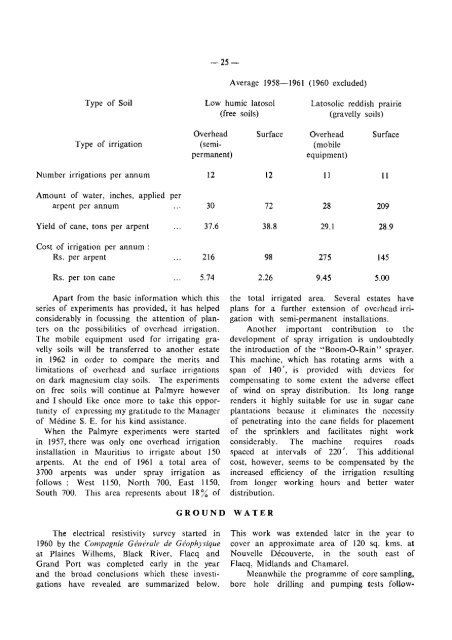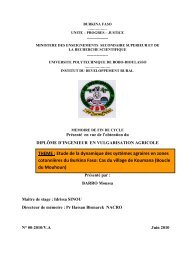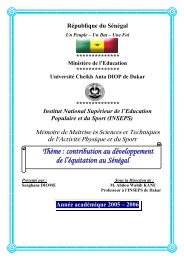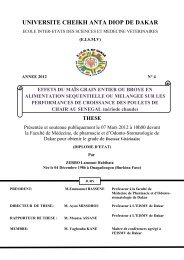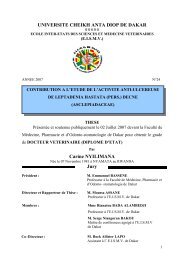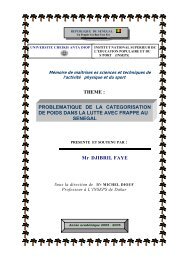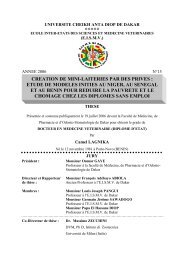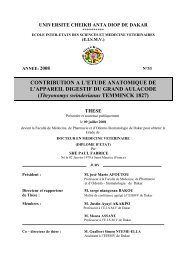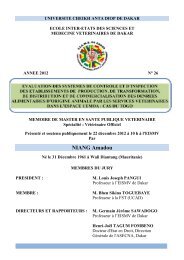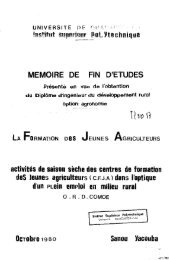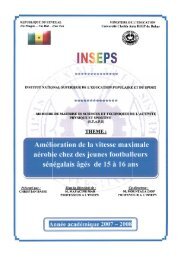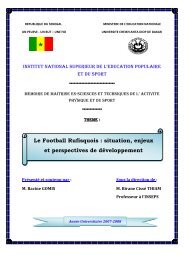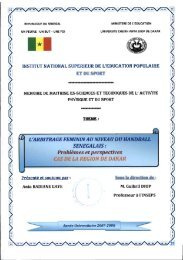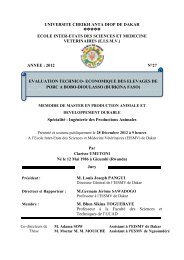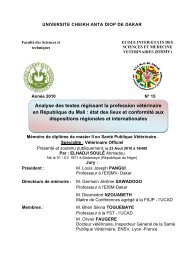Annual Report 1961 - BEEP
Annual Report 1961 - BEEP
Annual Report 1961 - BEEP
- No tags were found...
You also want an ePaper? Increase the reach of your titles
YUMPU automatically turns print PDFs into web optimized ePapers that Google loves.
-25-Average 1958-<strong>1961</strong> (1960 excluded)Type of SoilLow humic latosol(free soils)Latosolic reddish prame(gravelly soils)Type of irrigationOverhead(semipermanent)SurfaceOverhead(mobileequipment)SurfaceNumber irrigations per annum 1212I I11Amount of water, inches, applied perarpent per annum 307228209Yield of cane, tons per arpent 37,638.829.128.9Cost of irrigation per annum:Rs. per arpent 21698275145Rs. per ton cane 5.742.269.455.00Apart from the basic information which thisseries of experiments has provided, it has helpedconsiderably in focussing the attention of planterson the possibilities of overhead irrigation.The mobile equipment used for irrigating gravellysoils will be transferred to another estatein 1962 in order to compare the merits andlimitations of overhead and surface irrigationson dark magnesium clay soils. The experimentson free soils will continue at Palmyre howeverand I should like once more to take this opportunityof expressing my gratitude to the Managerof Medine S. E. for his kind assistance.When the Palmyre experiments were startedin 1957, there was only one overhead irrigationinstallation in Mauritius to irrigate about 150arpents. At the end of 196I a total area of3700 arpcnts was under spray irrigation asfollows: West 1150, North 700, East 1150,South 700. This area represents about 18% ofGROUNDThe electrical resrstivity survey started in1960 by the Compagnie Generate de Geophysiqueat Plaines WiIhems, Black River, Flacq andGrand Port was completed early in the yearand the broad conclusions which these investigationshave revealed are summarized below.the total irrigated area. Several estates haveplans for a further extension of overhead irrigationwith semi-permanent installations.Another important contribution to thedevelopment of spray irrigation is undoubtedlythe introduction of the "Boom-O-Rain" sprayer.This machine, which has rotating arms with aspan of 140', is provided with devices forcompensating to some extent the adverse effectof wind on spray distribution. Its long rangerenders it highly suitable for use in sugar caneplantations because it eliminates the necessityof penetrating into the cane fields for placementof the sprinklers and facilitates night workconsiderably. The machine requires roadsspaced at intervals of 220 ', This additionalcost, however, seems to be compensated by theincreased efficiency of the irrigation resultingfrom longer working hours and better waterdistribution.WATERThis work was extended later in the year tocover an approximate area of 120 sq. kms. atNouvelle Decouvertc, in the south east ofF1acq, Midlands and Chamarel.Meanwhile the programme of core sampling,bore hole drilling and pumping tests follow-


